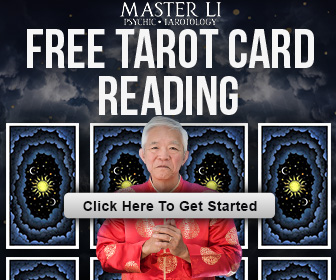Tarot card reading has been a source of fascination for many, offering insights into one’s life, personality, and future. As people become more interested in tarot card reading for beginners, a common question arises: is it possible to read your own tarot cards?
The practice of self-tarot reading is gaining popularity, with many enthusiasts exploring its potential for personal growth and self-reflection. By understanding the symbolism and meaning behind the cards, individuals can gain a deeper understanding of themselves and their circumstances.
Engaging in self-tarot reading can be a powerful tool for those seeking guidance and introspection. As we explore this topic further, we’ll delve into the benefits and techniques of reading one’s own tarot cards, providing a comprehensive guide for those interested in this practice.
Table of Contents
The Truth About Reading Your Own Tarot Cards
Despite common myths, reading your own tarot cards can be a powerful tool for introspection and guidance. Many believe that tarot readings are most effective when performed by someone else, but this overlooks the unique benefits of tarot reading that come from self-reflection.
Common Misconceptions About Self-Readings
One of the most prevalent misconceptions about self-tarot reading is that it’s inherently biased or less accurate than readings performed by others. However, with the right mindset and tarot reading techniques, individuals can gain profound insights into their situations and futures.
Another myth is that one needs to be “gifted” or have special psychic abilities to read tarot cards effectively. In reality, tarot reading is a skill that can be learned and honed over time with practice and patience.
The Unique Benefits of Reading for Yourself
Reading your own tarot cards offers a unique opportunity for personal growth and self-awareness. By engaging with the tarot, individuals can explore their subconscious mind, uncover hidden fears or desires, and gain a deeper understanding of their current life circumstances.
For those looking to deepen their practice, learning how to create your own tarot can be particularly empowering, allowing for a more personalized and meaningful experience.
The benefits of tarot reading are numerous, from enhancing intuition to providing a framework for decision-making. By incorporating tarot into one’s routine, individuals can cultivate a greater sense of self-trust and confidence.
Essential Preparations for Self-Reading
Before diving into the world of self-tarot reading, it’s crucial to lay the groundwork for a meaningful and insightful experience. This involves several key steps that can enhance your connection with the tarot cards and improve the overall quality of your readings.
Creating Sacred Space for Your Practice
Creating a conducive environment is vital for effective tarot card interpretation. This means designating a quiet, comfortable space where you can focus on your self-reading without distractions. Consider cleansing your space with sage or incense to purify the energy and promote a deeper connection with your tarot deck.
For more insights on creating a conducive environment, you can explore resources like wikiHow’s guide on doing your own tarot, which offers practical tips on setting up your space.
Choosing and Connecting With Your Deck
Selecting the right tarot deck is a personal and significant decision. Your deck should resonate with you on an emotional or aesthetic level. When choosing a deck, consider the imagery, symbolism, and overall feel. Once you’ve selected your deck, it’s essential to attune to its energy. This can be done by holding the cards, shuffling them, and perhaps performing a simple ritual to bond with the deck.
Setting Clear Intentions and Boundaries
Establishing clear intentions and boundaries is crucial for a productive self-tarot reading practice. Define what you hope to achieve through your readings, whether it’s gaining insight into a specific situation or exploring your personal growth. Setting boundaries helps maintain a healthy and respectful relationship with your tarot practice. For inspiration on formulating questions, visit True You Tarot’s list of questions to ask the tarot.
| Preparation Step | Purpose | Tips |
|---|---|---|
| Creating Sacred Space | Enhance focus and connection with the tarot cards | Use sage or incense for cleansing, minimize distractions |
| Choosing and Connecting With Your Deck | Personal resonance and energy alignment | Select a deck that resonates with you, attune to its energy |
| Setting Clear Intentions and Boundaries | Guide your readings and maintain a healthy practice | Define your goals, set boundaries, and respect your practice |
Can You Read Your Own Tarot Cards Effectively? A Step-by-Step Guide
The practice of self-tarot reading offers a profound way to connect with your inner self and navigate life’s challenges with clarity and confidence. To embark on this journey, it’s essential to understand the foundational steps involved in conducting effective self-tarot readings.
Formulating Questions That Yield Insights
The quality of your tarot reading is directly related to the quality of your questions. Formulating meaningful questions is crucial for gaining insightful and relevant answers from your tarot cards. To do this, focus on open-ended questions that begin with what, how, or why, as these encourage deeper exploration and understanding.
For example, instead of asking “Will I find love?” ask “What can I do to attract a fulfilling relationship into my life?” or “How can I cultivate self-love and prepare myself for a healthy partnership?” This approach helps in gaining a more nuanced understanding of your situation and the steps you can take.
Simple Yet Powerful Spreads for Self-Reading
Tarot spreads are templates that guide the laying out of cards, providing a framework for interpreting their symbolism and meaning. For self-reading, simplicity is often key. Here are a couple of simple yet powerful spreads to get you started:
The One-Card Daily Draw
Drawing a single card daily can provide insight into the day’s energies, challenges, and opportunities. It’s a great way to practice connecting with your tarot deck and tuning into your intuition. For more on daily draws and how to incorporate them into your routine, you can explore resources like 9 Tarot Spreads for Clarity.
Three-Card Past-Present-Future Spread
This spread involves drawing three cards, each representing the past, present, and future. It offers a straightforward way to understand how past events have led to your current situation and what future outcomes are possible based on your current trajectory.
| Card Position | Represents | Interpretation Focus |
|---|---|---|
| Past | Influences or events that have shaped your current situation | Understanding root causes or past patterns |
| Present | Your current state or situation | Recognizing current challenges or opportunities |
| Future | Potential outcomes or directions based on current actions | Guiding future decisions or adjustments |
Interpreting Cards With Clarity and Objectivity
Interpreting tarot cards requires a balance between intuition and objective understanding of the card’s symbolism. Start by observing the card’s imagery, noting any immediate reactions or feelings you have. Then, consider the card’s traditional meaning and how it relates to your question or the context of the spread.
It’s also crucial to practice objectivity by stepping back and viewing the reading from different perspectives. Ask yourself if the interpretation feels true to your current situation and if it offers actionable advice.
Developing Your Self-Reading Practice
To get the most out of tarot card reading for beginners, it’s essential to cultivate a consistent self-reading practice. This practice not only deepens your understanding of the tarot but also enhances the benefits of tarot reading in your personal life.
Keeping a Tarot Journal: Tracking Insights Over Time
Keeping a tarot journal is a simple yet powerful way to track your progress and insights over time. By recording your readings, you can identify patterns and themes that may not be immediately apparent.
“Journaling your tarot readings can reveal recurring symbols, themes, and messages that offer deeper insights into your journey.”
As tarot card reading for beginners evolves into a more advanced practice, your journal becomes a valuable resource for reflection.
Overcoming Bias and Personal Blind Spots
One of the challenges of self-tarot reading is overcoming personal biases and blind spots. To achieve a more objective reading, it’s helpful to establish a consistent practice that includes shuffling techniques and spread variations.
A quote from a well-known tarot reader emphasizes the importance of objectivity:
“The tarot is not about predicting the future; it’s about understanding the present.”
When to Seek Another Reader’s Perspective
While self-tarot reading is a powerful tool, there are times when seeking another reader’s perspective can be beneficial. Whether you’re dealing with a complex issue or seeking confirmation of your insights, an external reader can offer a fresh viewpoint.
This is particularly useful when you’re too emotionally invested in the outcome of a reading.
Conclusion
Reading your own tarot cards can be a transformative experience, offering a deeper understanding of yourself and your life’s journey. By incorporating self-tarot reading into your daily routine, you can tap into your intuition and gain valuable insights into your thoughts, emotions, and experiences.
As you’ve learned, effective self-tarot reading involves setting clear intentions, using simple yet powerful spreads, and interpreting the cards with clarity and objectivity. By mastering these skills, you can unlock the full potential of tarot card interpretation and cultivate a more profound understanding of yourself.
For those looking to further enhance their tarot practice, exploring resources like tarot readings can provide additional guidance and support. Ultimately, the journey of self-discovery through tarot is a personal and ongoing process, and one that can lead to greater self-awareness, empowerment, and fulfillment.


